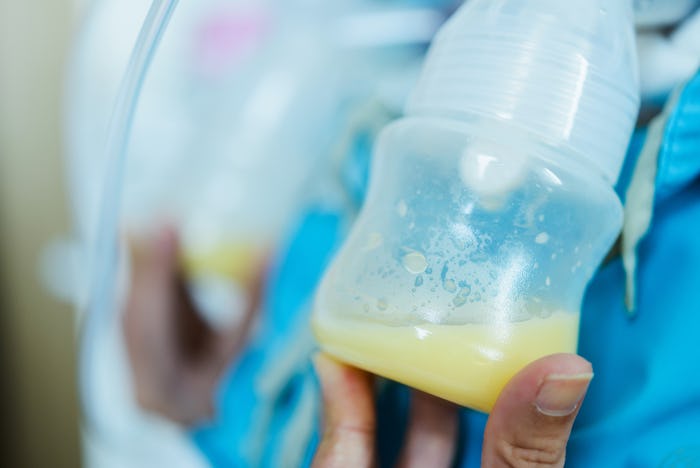Life

9 Things I Wish I'd Known About Power Pumping
As a mom with undersupply caused by insufficient glandular tissue, I was desperate to do anything to increase my supply. I took herbal supplements, an unsafe prescription medication, triple-fed (nurse, pump, supplement, repeat) my baby all day long, and used a supplemental nursing system to feed my daughter formula from a tube taped to my breasts. I wish I'd known about power pumping the first time around, though, because it is seriously awesome.
According to the Fed is Best Foundation, power pumping is when "a mother uses a breast pump to remove as much breast milk as she can in rapid (concentrated) intervals, in an attempt to stimulate her milk supply." After my son was born, I refused to lose time with my baby by pumping after every feeding, and I couldn't afford to buy supplements and drugs that didn't make a huge difference the first time around. So, as a result, I decided to give power pumping a try.
I didn't know much about power pumping, before I got started. I had to learn as I went, by trial and error. In the end, power pumping helped me to maximize milk production and go on to breastfeed my baby for eight months, something I was unable to do with my first baby and that was really important to me. Here are just a few things I wish I had known before I got started.
It's One Of The Only Things Proven To Increase Supply
According to Fed is Best Foundation, power pumping is the only safe tool that has been shown to be effective at increasing breast milk supply. I wish I had known that before I spent hundreds of dollars on herbal supplements, bought unsafe prescription drugs, and ate some pretty gross foods.
It Can Be Relaxing
Who would have thought that pumping would be relaxing. It turns out, when you get up to pump at 4:30 a.m. when everyone else, including baby is asleep, it can be super chill rather than stressful. Plus, I got caught up on Top Chef.
It Takes A Serious Time Commitment
There's a couple of different ways to do it, but I chose the 10 minutes on, 10 minutes off for an hour method, which meant finding an hour to pump, which is not always easy when you have a newborn. According to the Fed is Best Foundation, you can also split power pumping up into two sessions, if that's easier on your schedule.
It Can Be Stressful
The first couple of days I watched my milk flow, or to be more accurate, drip, like a hawk. I was so stressed about what was and was not coming out of my breasts.
The Best Time To Do It Is Early In The Morning
According to Lanisoh, the best time to power pump may be in the morning, because that's when your prolactin level and milk supply tend to be highest. I also tried to do it after a feeding, so I got some warm fuzzy feelings from snuggling with baby first. I swear it helped, but if not, it certainly helped make it more enjoyable.
It Might Take A Few Days To See Results
Initially, I was a bit disappointed at how little milk I seemed to produce. In fact, I almost quit after a few days of mostly empty bottles, because pumping seriously sucks, but after a few more days I started to see a dramatic increase.
Heat And Massage Seriously Help
I started using heat packs and massaging my breasts while pumping, and it made a huge difference. I even got little heat packs that attached to the outside of my pump flanges (fancy), but a cloth bag of rice will do the trick.
It Helps To Use Lube
Seriously, use lube. I used a water-based lube or coconut oil in my flanges to make sure my nipples stayed happy and pain-free, during all of that pumping. It may sound odd, but trust me, it works.
You Might Not Have To Do It Forever
As a mom with undersupply, power pumping worked and helped me continue breastfeeding my son, which was amazing. However, after a few weeks I was ready to stop. I was scared that it would impact my supply, so I weaned slowly off the pump, going from daily power pumping to every other day, to every third day, and finally to once a week. When I didn't see a dramatic decrease in my supply, I stopped power pumping entirely.